#caporetto offensive
Text

Austrian trench raiders during the Caporetto Offensive, 1917
283 notes
·
View notes
Text
Erwin Rommel during WW1
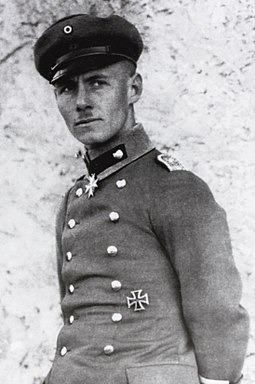
These are some facts and curiosities about Erwin Rommel during WW1:
When the First World War broke out, Rommel was employed on the Western Front in the offensive led by the German army against the joint French and British armies.
Rommel earned his first decoration on 24 September 1914, when he was awarded the Iron Cross 2nd class following an individual attack on five French soldiers in a forest near Varennes.
He was awarded the highest German military honour, the Order Pour le Mérite, which he received for the leadership skills demonstrated, with the rank of lieutenant, on the Italian front especially during the Battle of Caporetto in autumn 1917.
He was promoted to the rank of captain in January 1918.
For a time, Rommel served in the same infantry regiment as Friedrich Paulus, who, like Rommel, rose to the rank of Field Marshal during World War II.
He was wounded three times during the war
Sources:
Wikipedia: Erwin Rommel
Military Wiki: Erwin Rommel
I DON'T SUPPORT NAZISM,FASCISM OR ZIONISM IN ANY WAY, THIS IS AN EDUCATIONAL POST
83 notes
·
View notes
Text

Austria soldiers during the caporetto offensive (1917)
397 notes
·
View notes
Text
There are few wars marked so heavily by horror and with so little break from the horrors as this one:
One of my relative quirks as a military historian is believing that the stalemates and failures, which are much more typical of real warfare than the decisive Gaugamelas, offer much more realistic views of what war and the waging of war is than the Gaugamela-Cannae obsession (and indeed where Gaugamela remade the world Cannae was a victory that did less damage to Rome than the Arausio against the Cimbri and Teutoni did).
In the annals of the various theaters of WWI this is why I find the Eastern Front to be more of a set of lessons learned from the war than the Western, because all the combatants failed and were consumed by the war they started, even the ones that looked like they won. More broadly Salonika and the Italian campaign, the subject of this one, embody the 'Blackadder Thesis' of WWI in the closest it ever came to reality.
From 1915-8 the Italians were plunged into twelve Battles of the Isonzo, an Austrian drive on the Trentino, the Battle of the Piave, and the Battle of Vittorio-Venetto in conditions of freezing horror at high altitude where the war's two worst generals, Cadorna and Conrad, had unfettered power over the campaign. Austria owed its successes equally ironically to a general that modern ethnic ideas would consider Croatian who considered himself a subject of the House of Habsburg and beyond nationality like a good Habsburg subject would.
The soldiers of Italy displayed an uncommon valor through eleven Battles of the Isonzo where only the sixth, which saw the capture of the town of Gorizia, marked a major advance and most of them fit solidly into the pictures of the worst WWI generalship in troops being sent into headlong charges into the teeth of prepared positions by generals detached from the reality of the front and utterly unsympathetic to it. The price for the eleven battles, plus the technical victory in the Trentino Offensive, was the twelfth, usually known as Caporetto, or in the German name for it, Karfreit.
Eleven futile battles produced a near-collapse of the Kingdom of Italy that was redeemed not least by allied aid the Italians proved distinctly ungrateful for, and the ultimate price of the combination of vainglorious incompetence personified by the duel of Cadorna and Conrad was the disintegration of Austria-Hungary and the transformation of the rotting fabric of the Kingdom of Italy by Mussolini's March on Rome into the world's first fascist state.
In many ways the scars of the First World War linger even more thoroughly in Italy than in the UK, affecting both the resonance of fascism and the poor performance of the Italians of the Second World War, much less willing to die for Il Duce than they were for Cadorna and Diaz in the previous war. Such is the price Italy paid for what was one of history's most ill-starred concepts and the most grimly wretched in execution.
I believe that people who want to understand the nature, too, of what humanity can endure and the realities of how utterly sordid real wars are could stand to read this from cover to cover and to see that oftentimes authority does not deserve respect because it exists, and the dangers of creating echo chambers detached from any remote contact with reality.
10/10.
#lightdancer comments on history#book reviews#world war i#italian history#italian campaign of wwi#cadorna vs conrad: battle of the dumbfucks
0 notes
Text
Isonzo next part of the Caporetto expansion launches for Free
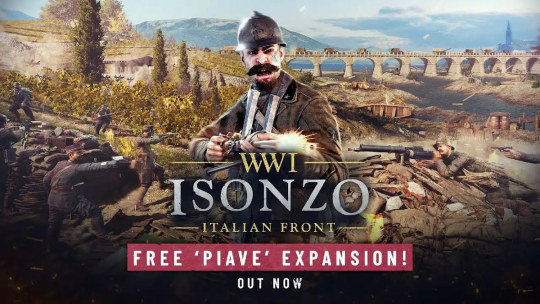
Isonzo releases its second free Piave update for the game on Linux and Windows PC. All due to the continuous commitment of developers M2H and BlackMill Games. The game is available on both Steam and Humble Store.
The second update of historical WW1 FPS Isonzo’s three part Caporetto expansion releases now. In Piave update, German troops charge across the Piave river in the newly added Offensive map. While Italian soldiers fight tooth and nail to hold them off. And with new weapons for both sides of the war, the Battle of Caporetto offers new tests for everyone.
Just like the first part of the Caporetto expansion, the Piave update is free for all Isonzo players. As revealed in the roadmap. This is also the second update of many to be released on Steam.
Crossing enemy lines to cross the Piave
The Piave update marks the next part of the free Caporetto expansion. Available in Isonzo, adding a new Offensive map for soldiers to fight their way through. This time, players will either have to defend the river Piave as the Italians or attempt to cross it as the Germans. Since both sides will have a fierce battle waiting for them. They won’t be going to battle empty handed, though. Since there are two new weapons now added to the game to even the odds. German soldiers can now equip the Mauser M1914. While the Italians can choose to use the Beretta Modello 1917. There area also various new custom match options included in this update.
In order to cross the river, German soldiers must first fight their way through a vineyard in Isonzo. Due to capture the ruins of a castle at the top of a hill. The town of Vidor and its Abbey are the next targets. Followed by the final destination: the Piave river and its bridgehead. Where German troops must find a way to cross the water. Of course, the Italian army won’t be making any of this easy for the Germans. Since Italian soldiers will be awaiting their attacks and giving it their all. Doing what it takes to prevent the others every step of the way.
Isonzo - Free Piave Update - OUT NOW
youtube
In history the Battle of Caporetto represents a major defeat for the Italian army. In the end, involving the formation of a new cabinet. Armando Diaz replaced Luigi Cadorna as chief of staff. Standing his ground at the Piave river to prevent Venice from falling into enemy hands. According to our history books, his defense proved a useful one. Marking the beginning of the end for the Austro-Hungarian Empire. In Isonzo, players can change the course of history. Which army will conquer the Piave?
The Caporetto expansion introduces players to a major part of the German involvement on the Italian Front. All new maps are based on careful research to reflect the tests faced by soldiers. Doing so for both sides of the conflict. Along with period maps and photography plus written memoirs and modern histories.
For more information about this Isonzo update, check out our latest devblog.
Several discounts are running for the multiplayer WW1 Game Series titles on Steam, with 40% off Isonzo dropping the price to $17.99 USD / £14.99 / 17,99€ The 40% discount also includes the Deluxe Edition). Along with 30% off the Elite and Alpine DLCs. And 10% off the Royal DLC as well as the soundtrack for those who want to enjoy authentic WW1 Italian Front action. Regular price, $24.99 USD / £19.99 / 24,99€ on Humble Store. While including support for Linux and Windows PC.
0 notes
Text

Austrian trench raiders (Caporetto offensive), 1917
#first world war#history#ww1#austro hungarian empire#austrian#gas mask#offensive#trench#trench raiders#1917#italy#austria#slovenia#wwi#austria hungary#world war one#world war i#central powers#world war 1#caporetto#battle#war#warfare#italian front
49 notes
·
View notes
Text
An Extremely Tepid Defense of Luigi Cadorna
Italy’s military Chief of Staff during World War One, Luigi Cadorna, has a deserved reputation for being one of the worst commanders of the war. Bret Devereaux has a really good breakdown of all the reasons why - to summarize, if you ever find yourself fighting the 11th Battle of the Isonzo, presumably because the first ten failed, maybe you should rethink your strategy of constantly attacking mountains. Cadorna was antiquated, stubborn fool who treated his soldiers like cattle to boot.
....But there is in fact a logic to his failure that I think goes underappreciated, in that Italy was in a truly *awful* strategic position in World War One. Here is a map of the Italian Front:
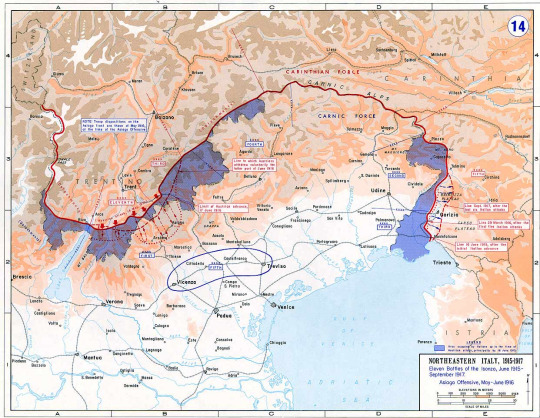
Ignore the battle lines, and instead focus on the terrain. The *entire* Hapsburg front for dozens of miles is mountainous, defensible terrain. There is no chance of breakthrough, no real chance of advance, just a point-by-point grind. However, this isn’t true for the Italians; once you bypass a few miles of mountains, or none at all near the east around Trieste, you are into the open fields of the Po river valley. And additionally this is very valuable land; Italy’s north is its most industrialized sector, with its economy centered around Milan just to the west of this map.
All of this terrain creates an offensive asymmetry; an Italian offensive must be sustained and will move by inches, but one Austrian offensive could achieve a breakthrough, the holy grail of military operations, and occupy valuable land - which actually happened in 1917, at the Battle of Caporetto:

Finally add to this picture the fact that Italy had one of the worst mobilization infrastructures of the war, particularly in the all-important category of rail, and as such their ability to deploy forces in *response* to enemy movements is going to be difficult.
When criticizing a military strategy, you must always answer the question “what else should have been done?” When it comes to Italy in World War One, the most common suggestion for Italy is to simply fight on another front. Send the forces to France, send them to the Middle East, operate as a supporting infantry for armies with greater offensive capabilities on better terrain. Deploy less men on this front, and be productive elsewhere. Here though is where that cursed asymmetry comes into play; it is *very* risky for Italy to deploy forces away from the Austrian front. They may only need one victory, and they can deploy forces to the front faster than Italy can. Austria can keep half the numbers Italy has for months, but if Italy draws down the numbers to match then one surprise offensive later and Venice is being shelled by artillery. Italy has to constantly keep *more* men than Austria on this front, always, to mitigate this potentiality.
So okay, Italy can’t deploy half its army to France, their forces are stuck in the Po River valley. That doesn’t mean Italy has to throw them at mountain strongholds to die by the hundreds of thousands! I mean, I agree, it doesn’t, but here is where geopolitics rears its head. Italy wasn’t attacked by the central powers; it entered the war to gain territory, specifically Austrian territory, upon victory. A victory Italy knows it can’t achieve on its own, but instead must ride on the backs of England & France. Which means Italy’s strategy is, in some ways, at the mercy of those allies.
And how do you think a strategy of “deploy our men to the Austrian border and do nothing” looks to those allies? Looks like freeloading! Austria would *love* that, due to that damned asymmetry it means it can deploy a lot of its forces away from the quiet border to more important fronts like Russia. If Italy wants to be useful, wants to ‘contribute to the war effort’, it has to attack, to make sure Austria is bleeding at least somewhat. Which the Allies understood - there was constant pressure by the Allies on Italy to do ‘something’, and 11 battles on the Isonzo was Italy’s answer to that demand. If it wanted the territories it claimed it did, it had to show its value.
Its the combination of strategic complications and political goals that tied the hands of Cadorna & the Italian military. They had no real offensive options, but had an offensive necessity, and so the worst answer emerged. None of this is a pass; Cadorna was also an awful operational commander, and there is no escaping that Italy bled its own military enough in these attacks to make them vulnerable to precisely the asymmetric breakthrough that occurred. If I was commander of Italian forces I would have bit the bullet, deployed Italian forces elsewhere to contribute, and prepared best I could defensively on the terrain, possibly building a fallback line around say Treviso where the lines are shorter and logistically better supported to make my real defense in case of a large assault. Yet such a strategy prioritizes the larger war effort over Italy’s own terrain; smart strategically, but tough politically.
So in conclusion, Cadorna was a moron, but not quite the moron one might think when you first learn about the grind on the Isonzo. There was a lot of pressure to grind.
136 notes
·
View notes
Photo

Austrian trench raiders (Caporetto offensive), 1917 [979 x 1500] [Colorized] Check this blog!
32 notes
·
View notes
Photo
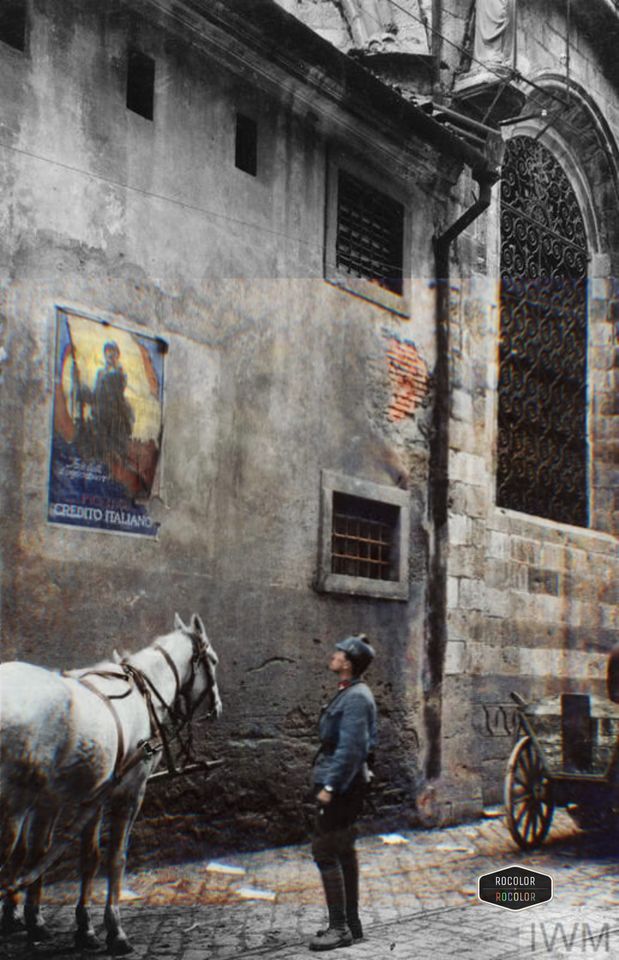
An Austro-Hungarian officer reading an Italian war bonds poster in the captured Italian town Udine, November 1917.
In Italy, five war bonds were issued during the war. The moments chosen were significant: immediately after the outbreak of the war, to leverage interventionist enthusiasm; in 1915, when thinking about the need to support the offensive effort; in 1917, before and after Caporetto, when it was necessary to unite all the economic and ethical capitals against the danger of a painful collapse.
Colour: ROCOlor
(© IWM Q 86152)
WW1 Colourised Photos
30 notes
·
View notes
Text
Suddenly, on 24 October 1917, the forces of Austria-Hungary, leavened by German troops withdrawn from the Russian front, launched an offensive, announcing their advance with a massive gas attack. It would be called the Battle of Caporetto, after a village known in Slovene as Kobarid on the upper Isonzo. Before the fighting was over, the Italians lost 40,000 dead or wounded, 280,000 POWs, 350,000 deserters or stragglers, a huge volume of arms and equipment and a slice 150 kilometres long of prime land in the Veneto. With the help of eleven British and French divisions, rushed to their aid (but greeted with suspicion by the military leadership, some ordinary soliders and the common people), the Italian armies eventually resisted and held on the Piave river, only about thirty kilometres from Venice and the opening to the entire Po valley. The rally occurred on 9 November, two days after the Bolsheviks had seized the Winter Palace and one day after they had announced that their new administration was offering peace, land and bread to its population. At that moment, Italy seemed very likely to follow Russia out of the war and into domestic revolution.
For the expert on the ‘southern question’, Giustino Fortunato (1848-1932), who embodied much of the liberalism of the Risorgimento, a sign of the times was made manifest on 2 August 1917. That day he was assaulted by his own peasants, men and women who, he complained, had been loyal servitors of his family for two centuries. ‘Who would ever have thought’, he lamented to Salandra, ‘that so savagely terrible a state of mind’ could exist among the poor? Among such people, a dreadful rumour had taken root that ‘the “masters”, the “bourgeois”, the “scribblers”‘, had covertly approached the government to prolong the war at the peasantry’s cost. Such conspiracy theories and the ubiquitous popular rejection of the war were not the result of malign socialist propagandizing, Fortunato had to admit. Rather, peasants returning from the front brought the bad news and themselves urged a breaking with the bosses. ‘The last, vain, illusion of my life is fallen,’ Fortunato remarked mournfully. It was too much. ‘I had the right to a little more love and a little more respect.’
Despite Fortunato’s prophecy that the end of the world was nigh, in the event there was no full-scale collapse. Farinacci later wrote that the defeat at Caporetto and the resistance that it aroused signalled a break between the old Italy and his new one, the Italy of ‘Fascist revolution’. Although not the most reliable of historians, Farinacci had a point. In late 1917 the methods, however authoritarian, of a liberal and dynastic campaign to which the Italian state had so far clung were evidently insufficient as a means of dealing with the world crisis and, at least if Fortunato’s experience meant anything, maybe Risorgimento-style liberalism was equally inadequate in keeping the home front united and purposeful.
— R. J. B. Bosworth, Mussolini's Italy (2005)
2 notes
·
View notes
Photo
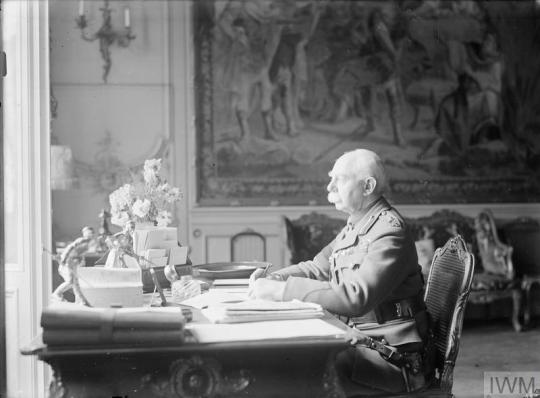
We are often told that they taught us nothing at Eton. That may be so, but I think they taught it very well.
- Field Marshal Herbert Charles Onslow Plumer, 1st Viscount Plumer, addressing an Old Etonians’ dinner in 1916.
One of the original generals of the Western Front during World War One unfairly tagged with the ‘lions led by donkeys’ label.
Herbert Charles Onslow Plumer (1857-1932) was born in 1857 in Torquay. Educated at Eton, he entered the army in 1876 with a commission as a sub-lieutenant in the 65th Foot regiment.
With his squat figure, ruddy countenance and white moustache, Plumer cut an apparently comical figure which belied the reality that he was one of the most effective and successful of First World War generals.
Popular among his own men (if not with Field Maeshal Haig, who disliked Plumer and considered removing him on several occasions), Plumer was a meticulous planner, cautious and impossible to fluster. Given command of Second Army in May 1915, Plumer served in Ypres for two years, culminating with the launch of the Messines Ridge offensive on 7 June 1917.
The Messines attack was planned with great care and, unusually, achieved all its objectives quickly and at a fraction of the usual cost. The attack was a great success. It was begun with the explosion of 19 of 21 mines at dawn on 7 June that was said to form the loudest man-made sound up to that time; Lloyd-George is reported to have heard the explosions in Downing Street.
Following the Messines success, Plumer was appointed to salvage the disastrously unsuccessful Passchendaele campaign overseen by Gough. Despite difficult circumstances Plumer managed to salvage the operation; in spite of his reputation as a cautious, sparing commander his operations at Passchendaele were more than usually expensive in terms of casualties.
After returning from the Italian Front in November 1917 (where he was sent to restore order to the front line following the Italian disaster at Caporetto), he and Second Army conducted the defence against the great German push of spring 1918.
Plumer was promoted Field Marshal following the armistice in 1919 and received a peerage. He commanded the Army of Occupation on the Rhine until April 1919. He was subsequently appointed Governor and Commander-in-Chief of Malta until May 1924. He also served as High Commissioner in Palestine; became President of the MCC (Marylebone Cricket Club, at Lords), and became an active member of the House of Lords. Plumer unveiled the new Menin Gate in Ypres in 1927.
Herbert Plumer died on 16 July 1932 and is buried at Westminster Abbey.
#plumer#field marshal herbert plumer#viscount plumer#general#first world war#quote#eton#education#ruling class#war#leadership#lions led by donkeys#britain#briths army#passchendale#ypres
15 notes
·
View notes
Photo
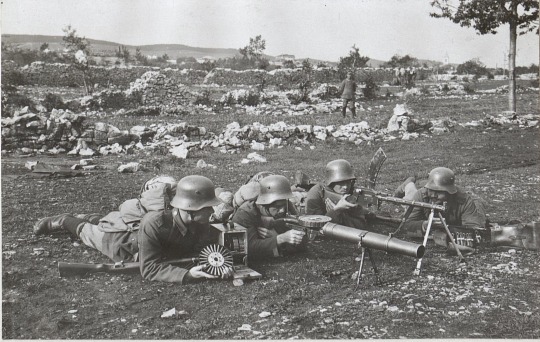


German “Muskete” section on the Italian Front, 1917
1917 marked the year that the Eastern Front of the Great War came to an end. With Russia now at peace with Germany and Austria-Hungary, troops stationed in the East could be sent to reinforce divisions on the other fronts. While the fighting in France raged on, and was unlikely to end any time soon, the Central Powers saw their renewed manpower as an opportunity to knock the Italians - isolated from their allies - out of the war. The war on the Italian Front had been ongoing since May 1915 and, despite no less than 11 back-and-forth offensives along the Isonzo River, it had seen little ground gained or lost by either side.
The Austrians, who had largely been fighting a defensive war against the Italians, planned a large-scale offensive, utilizing new “Storm Trooper” tactics. Germany agreed to send 7 divisions of troops to assist in the Austrian offensive, which was launched on the 24th of October. It was a devastating victory for the Austro-German forces, pushing the Italians all the way back to the Piave river and decimating the brunt of their forces. Some 200,000 Italians were captured and thousands deserted.
These photos were taken just before the Caporetto offensive and depict a group of German troops who had been sent to reinforce the Austrians. The selection of weapons in these photos are interesting, as non of them are typical of German wartime issue. The machine-gunners are armed with Danish Madsen guns, which were referred to by the Germans as “Musketes”. Only limited quantities of this gun were purchased by the German Army and it is rare to see them in use - especially with the accompanying leather pouch for spare magazines. One of the machine-gunners is even armed with a British Lewis gun, probably a souvenir from the Western Front, complete with a wooden crate for storing several flat-pan magazines. In addition, the riflemen, who are acting as loaders for the machine-gunners, are equipped with the scarce Kar98a carbine rather than the standard-issue Gewehr 98.
Also shown in a photo is a rather unwieldy wooden cart which acts as a mode of transportation for the “Musketes” and their ammunition. Apparently, a similar cart was initially issued with the M.P.18,I submachine gun when that came into service. The soldiers can also be seen to be carrying C96 pistols and hand-grenades, indicating that they are perhaps Sturmtruppen - this would seem to fit with the choice of weaponry, as light machine guns and carbines were favoured among assault troops.
The Austro-Hungarians also made use of light automatic weapons at Caporetto. They too had purchased small quantities of Madsen guns, in 8x50mmR, and just a few days prior to the offensive they received a 9x23mm submachine gun known as the “Sturmpistole”, which was a reverse-engineered copy of the Italian Villar Perosa. Both were fielded by Austrian Sturmbataillons during the offensive.
Paradoxically, the success of the Caporetto offensive proved to be Austria-Hungary’s undoing in the long run. So much ground was gained that supply lines were stretched thin and a follow-up offensive in mid-1918 floundered. Conversely, the Italian Army only got stronger. The threat of invasion from the Austrians promoted national unity in Italy, with recruitment and morale at an all-time high. Incompetent elements of the Italian General Staff were fired and replaced, and reinforcements were sent from Britain, France, and the United States. When the Italians hit back on the 24th of October 1918, the anniversary of the Caporetto offensive, they found the Austro-Hungarian Army in a state of total decay, and by the time they surrendered on the 4th of November, the Hapsburg Empire had completely collapsed.
49 notes
·
View notes
Photo

24 Ottobre 1917 ha inizio la Dodicesima battaglia dell'Isonzo, passerà alla storia come la Battaglia di Caporetto, nel linguaggio comune ancora oggi sinonimo di disfatta e umiliazione.
24 Ottobre 1918, inizia l'offensiva di Vittorio Veneto, la vittoria dell'esercito italiano e degli alleati è vicina. In queste due date si riassume molto della storia della Grande Guerra sul fronte italiano.
Nella foto, copertina del giornale di trincea "San Marco".
ENGLISH: 24 October 1917 on the Italian front it begins the Twelfth Battle of the Isonzo, it will go down in history as the Battle of Caporetto, in the Italian every day language it's still synonymous with defeat and humiliation.
24 October 1918, the Vittorio Veneto offensive begins, the end of the war and the victory of the Italian army and the allies is near. Loss and victory all in a highly symbolic date.
In the image, front cover of the Italian trench journal "San Marco" with the title "Caporetto capo eretto" (Caporetto, head up)
#caporetto#vittorio veneto#italian front#italian army#trench journal#giornale di trincea#san marco#accadde oggi#kobarid#grande guerra#prima guerra mondiale#ww1#great war#first world war#on this day
19 notes
·
View notes
Text
Battle of Vittorio Veneto
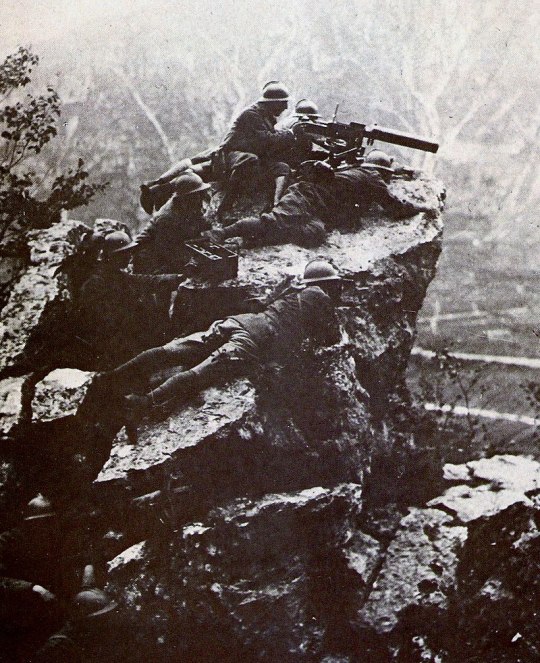
Italian machine-gunners on Mt Grappa.
October 24 1918, Mt Grappa--The Allies had urged the Italians to go back onto the offensive, for the first time since the summer of 1917, to put pressure on the Austrians in conjunctions with the attacks on the Western Front and in Macedonia. Diaz, not believing his army was ready and wanting to conserve strength for 1919, refused to do so without massive Allied reinforcements that were not forthcoming. By the end of September, however, the political calculus had changed, as the distinct possibility had emerged that the war might end this year. The Italians did not want to be caught at a disadvantage at peace negotiations if they had not participated in the victory, and Orlando ordered Diaz to prepare for an offensive.
The attack was launched on October 24, the one-year anniversary of the Italians’ disaster at Caporetto. Heavy rains and flooding on the Piave meant a delay for the armies poised to strike across the river, so the first attack fell on Mt Grappa; after securing the mountain, the Italians hoped to drive up the Brenta river valley and cut off the Austrians on the Asiago plateau. The Austrians were well-prepared for the attack, though, and knew full well it was coming. Over a week of fighting on Mt Grappa would result in essentially no gains and a cost of over 21,000 Italian casualties.
Despite their successful defense on Mt Grappa, however, elsewhere things were not all well for the Austrians. Early in the morning of October 24, British troops crossed part of the Piave by boat and seized Papadopoli island in the middle of the river, a crucial jumping-off point for a full crossing of the river. Mutiny was also beginning to spread through the Austrian troops, sparked in part by Emperor Charles’ disastrous "People’s Manifesto” of a week prior. Traditionally loyal Bosnian reserves mutinied and had to be disarmed because Charles had apparently forgotten to mention their homeland in his manifesto. On October 24, two Hungarian divisions on the Asiago plateau simply abandoned the front line and headed for home.
Today in 1917: Caporetto
Today in 1916: French Retake Fort Douaumont
Today in 1915: British Indian Advance on Baghdad Approved
Today in 1914: Maritz Defeated in South Africa
Sources includde: John R. Schindler, Isonzo; David Stevenson, With Our Backs to the Wall; Mark Thompson, The White War.
#wwi#ww1#ww1 history#ww1 centenary#world war 1#world war i#world war one#the first world war#the great war#italian front#piave#Italy#diaz#orlando#october 1918
183 notes
·
View notes
Photo
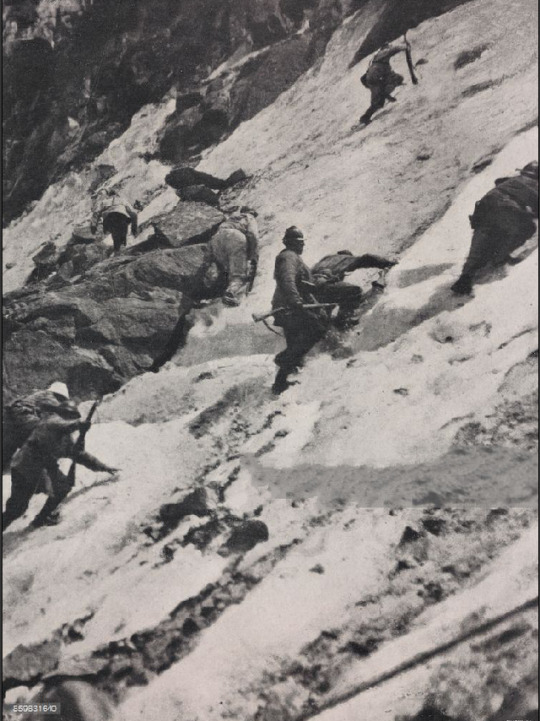
June 14, 1918 - Preliminary Austrian Attack on Italian Front
Pictured - Italian mountain troops attack up the Tonale Pass. Fighting in Alps tested the determination of both sides.
The rumblings of the next Central Powers offensive came in Italy on June 13 and 14, 1918. A limited Austrian attack made some headway against Italian positions in the Tonale Pass, a mountain pass in northern Italy that went through the Allied lines. Italian artillery and machine-gun fire threw the Austrians back after several hours.
The German attack on the Western Front was dying down, but nevertheless the Central Power’s military heads believed the Allies remained at the point of collapse. In the Hapsburg military, the hapless Chief of Staff Conrad von Hotzendorf had been replaced by the more efficeient General Arthur Arz von Straussenburg. Twenty-one divisions of Austro-Hungarian POWs had been repatriated from the east and replenished Straussenburg’s ranks, although many of the returning soldiers had mingled with the Bolsheviks during their captivity and displayed a worrying understanding of revolutionary ideology. Mutinies in the Dual Monarchy’s army grew in number. Increasingly, “troops were needed to keep order on the streets,” writes historian Peter Hart. More optimistically, however, Straussenburg had also spent the spring drilling his troops in new assault tactics learned on the Western Front. For the first time in the war the Austrians had numerical parity in Italy with their enemy.
Yet the Italians had spent their time preparing too. After their disastrous defeat at Caporetto in October, they had withdraw to a defensive line on the Piave River north of Venice and replaced the incompetent Luigi Cadorna as Chief of Staff with the much more professional Armando Diaz. A stern martinet, Diaz reinvigorated Italian morale and improved the ordinary soldier’s lot. A coordinated effort by the Allied governments had also aided Italian industry, while experienced British and French advisors retrained Italian soldiers in the material warfare practiced in the West - no more pointless bayonet charges up the mountain slopes. The Austrians were preparing for a knock-out blow in the Italian theater, but the Italians were determined to weather the storm.
121 notes
·
View notes
Text
Isonzo second update coming for the game

Caporetto expansion second update has a release date for Isonzo the WW1 FPS game on Linux and Windows PC. This is the result, once again, to the commitment of M2H and BlackMill Games. The game is available on Steam and Humble Store with 85% Very Positive reviews.
WW1 FPS Isonzo will receive its second update, the Caporetto expansion, on February 28th. Soldiers on Linux and Windows PC can expect various new weapons. As well as the second of three new Offensive maps based on the Twelfth Battle of Isonzo. This time, they must conquer not just their enemies but also the river Piave. Doing so in order to secure victory.
Just like the first part of the Caporetto expansion, the Piave update will be free for all Isonzo players. As revealed in the roadmap, this will be the second update of many to be released on Steam.
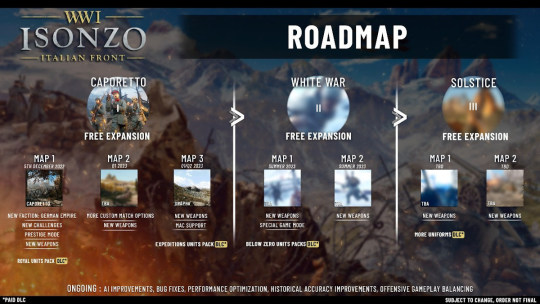
Caporetto expansion
With this next free update, players must face the river Piave. Doing in the second of three new Offensive maps coming to Isonzo in the Caporetto expansion. Battling their Italian enemies on the dangerous hillsides by the river banks. Now the German soldiers must survive the treacherous nooks and crannies of Caporetto. All while they attempt to overcome the challenge of the Piave with all their might.
Isonzo - Piave Map Teaser
youtube
The Caporetto expansion follows the history books, after the Italian defeat at Caporetto (October 24, 1917), they retreated to the Tagliamento line. At the same time, Boselli resigned as the prime minister of Italy and a new cabinet was formed. They met with the British and French prime ministers and decided to replace Luigi Cadorna with Armando Diaz. Doing so as the new Italian chief of staff. The king supported his new chief in a plan to stand firm on the Piave river. Due to prevent Venice from falling into enemy hands.
Now it is time for players to pave the way to victory in the Caporetto expansion. By either attempting to build a bridge across the Piave or by preventing their enemies from doing just that. Either way, both sides will have a fierce battle waiting for them! The update will also be adding two new weapons to even the odds: the Mauser M1914 and the Beretta Modello 1917.
As the Caporetto expansion gears up for the Isonzo release. You can WW1 FPS game is priced at $29.99 USD / £24.99 / 29,99€. Available on Linux and Windows PC via Steam and Humble Store . Which is also Steam Deck playable.
#caporetto expansion#isonzo#content update#linux#gaming news#m2h#blackmill games#ubuntu#windows#pc#unity
0 notes